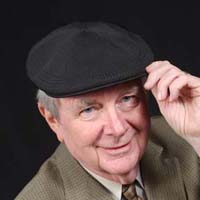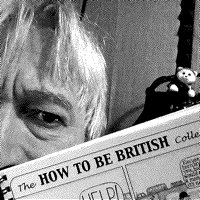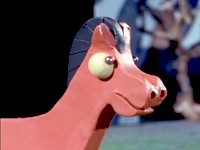 |
VO-BB - 20 YEARS OLD!
Established November 10, 2004
|
| View previous topic :: View next topic |
| Author |
Message |
Benjamin Stovall
Been Here Awhile

Joined: 13 Dec 2011
Posts: 250
Location: Los Angeles, CA
|
 Posted: Sat Jul 27, 2013 3:05 pm Post subject: What's your noise floor? Posted: Sat Jul 27, 2013 3:05 pm Post subject: What's your noise floor? |
 |
|
Right now mine is at about -66dB with a Sennheiser 416 / Avalon 737sp combo. I use a 7x7 Whisper Room. What does yours look like?
_________________
Ben Stovall Voiceover
http://www.benstovall.com
"When you're nearing the end of your rope, tie a knot. Keep on hanging. Keep on remembering, that there ain't nobody bad like you." -- The Electrifying Mojo |
|
| Back to top |
|
 |
cyclometh
King's Row

Joined: 06 Aug 2010
Posts: 1051
Location: Olympia, WA
|
 Posted: Sat Jul 27, 2013 3:27 pm Post subject: Posted: Sat Jul 27, 2013 3:27 pm Post subject: |
 |
|
No whisper room, but a fairly well-treated studio space here. Using a Chameleon TS-1 Mk II and MicPort Pro, I get -62dB. I look forward to getting a StudioBricks or something similar, because I'm pretty sure I could take it down to -68 or -70.
Someday...
_________________
Corey "Vox Man" Snow
http://voxman.net |
|
| Back to top |
|
 |
Bill Roberts
Contributor IV
Joined: 08 Dec 2009
Posts: 148
Location: Las Vegas, Nevada.
|
 Posted: Sat Jul 27, 2013 5:39 pm Post subject: Posted: Sat Jul 27, 2013 5:39 pm Post subject: |
 |
|
Prior to my move, a few guys who reviewed my test file and said I was -74 but now Im at -60 both with the 416. I really want a whisper room, I love the floor well below -60.
_________________
-----
VO-BB Member # 764 (Dec 2009) |
|
| Back to top |
|
 |
vkuehn
DC

Joined: 24 Apr 2013
Posts: 688
Location: Vernon now calls Wisconsin home
|
 Posted: Sat Jul 27, 2013 5:47 pm Post subject: Posted: Sat Jul 27, 2013 5:47 pm Post subject: |
 |
|
I posed a very similar discussion in a forum populated by a bunch of Radio Broadcast engineers/technical people. (One of them thought my question so below his dignity level that his answer was: "You need to enroll in a recording class at some university." I offered an appropriate response to his put-down and I am waiting for details!)
So here is my question to the two of you: Your noise level is -66, or -68 to 70. Below WHAT? What is zero? Yes I look at my recordings and if I am careful the noise level as indicated on my screen is down in that range. BUT... peak program level is maybe -9. So if I either run the recording through compression, or if I expand the horizontal scale of the screen and manually take out the "outlier" random peaks, maybe my program content is really about -12. (Peak values)
-66 compated to -12 is a signal to noise ratio of -54.
ACX guidelines call for program content to be around -18 to -23 dB Average RMS. My experience is that takes some agressive compression to achieve... which results in pulling the noise floor on up higher.
My quest right now is to figure out how to measure my room and decide if the room is quiet enough, or do I need to do something drastic to cut the ambient noise.
There is a lot of discussion in a lot of venues where people are posting: "My noise level is -xx" but seldom does anyone describe what ZERO is that they are referencing to achiece -something. Any help? Anyone have an "Explainer Voice-Over" on this topic?  |
|
| Back to top |
|
 |
Bish
3.5 kHz

Joined: 22 Nov 2009
Posts: 3738
Location: Lost in the cultural wasteland of Long Island
|
 Posted: Sat Jul 27, 2013 6:17 pm Post subject: Posted: Sat Jul 27, 2013 6:17 pm Post subject: |
 |
|
I'm not trying to be glib, but just go to wikipedia for a full run-down on dB, dBm, dBm0 and all the other different types of deciBel measurement and weighting factors. I studied it for years when I was a telecommunications apprentice and to try and summarize in a short message is bound to confuse the issue even more.
The most important thing to remember is that the dB is a logarithmic ratio, with power being halved with every drop of 3dB. In a practical sense, simply set your recording so that you're peaking below the nominal 0dB clipping point, and then measure the noise... remember that -63dB is half the noise of -60dB and so on.
With dB everything is relative... however, when you start using dBm (etc.), you are actually using defined values for the power... 0dBm is a power level of 0.5mW, meaning that -3dBm is 0.25mW etc. ... and 0dBu is 1 volt (RMS, sine wave =0.775 volts).
I'm not exactly sure what you mean when you talk of ACX wanting -18 to -23 RMS and you needing to compress heavily to deliver that. Apart from the fact that ACX have been rather misleading with their tech documentation (very much geared towards Audacity)... all you need to do is use the compression that sounds right (less is better), and then shoot your levels to match what they need... If you've recorded at the optimum level (i.e. no clipping, maxing out around -3dB) minor compression should bring it down a bit (don't use make-up gain), and then trim your levels if needed. FYI, I always send in with slight compression and peaks hovering around -6dB. You shouldn't be using compression to manipulate your output levels.
BTW, I'm sitting around -70dB in my room.
_________________
Bish a.k.a. Bish
Smoke me a kipper... I'll be back for breakfast.
I will not feed the trolls... I will not feed the trolls... I will not feed the trolls... I will not feed the trolls. |
|
| Back to top |
|
 |
Benjamin Stovall
Been Here Awhile

Joined: 13 Dec 2011
Posts: 250
Location: Los Angeles, CA
|
 Posted: Sun Jul 28, 2013 6:57 pm Post subject: Posted: Sun Jul 28, 2013 6:57 pm Post subject: |
 |
|
Vernon wrote:
| Quote: | | I look at my recordings and if I am careful the noise level as indicated on my screen is down in that range. BUT... peak program level is maybe -9. So if I either run the recording through compression, or if I expand the horizontal scale of the screen and manually take out the "outlier" random peaks, maybe my program content is really about -12. (Peak values) |
and then:
| Quote: | | ACX guidelines call for program content to be around -18 to -23 dB Average RMS. My experience is that takes some agressive compression to achieve... which results in pulling the noise floor on up higher. |
Bish's explanation is leagues above any I could offer, but I'll share my perspective. In my experience, good recording levels for VO have typically been in the -18 to -12 range (the higher average in that range the better). It is when I am at those recording levels vocally, that I measure the level of recorded silence. That is what I think of as my noise floor. Generally, I'm recording at around -12dB and peaking at about -6dB when I say that my noise floor is -66dB. This is of course, using a digital metering standard, so I define what "0" is by the top of the meter. That may be oversimplifying things, but it has produced quality output for me, which is what this is ultimately all about, right?
That being said, in regards to achieving "ACX standards," (and I use that term loosely), as long as you record at good levels, you can use RMS normalization, compression or hard limiting to easily fall into the -23dB to -18dB RMS range. The question is, which to use and why?
There are some who will rail against any normalizing, but I submit that it has its place. What happens with normalizing is gain is being uniformly adjusted throughout the entire waveform. Maximum peak value and RMS value are determined, which is what the overall level is based on. RMS normalizing is essentially the same thing, but average levels are used versus peak levels.
Compression is something else entirely. Quieter levels are left untouched, while peaks are lowered to reduce dynamic range.
Limiting reduces the peaks, bringing up the overall volume.
So what to use?
Compression will affect sound characteristics. Itís often used (or unused) simply because of this fact, versus other methods. Itís really useful when there is a wildly different range in volume from soft to loud.
Limiters (I personally love the software one done by FabFilter) are best used to control the peaks in a track or to bring up the volume of a track overall.
Although normalizing is hotly debated because it brings up all sound levels to reach a target level, ACX allows for this in attaining its quality standards, so it is a viable option.
The most helpful thing I can offer you in this regard may be related to how I think about peak metering versus RMS. If your levels are in a good range on the DAW's meter, then RMS normalizing to -20dB rather than using compression (Adobe Audition has this feature as does Pro Tools), you should fall within the -23dB to -18dB RMS range very easily. I know that Audition will show you your RMS level after normalization using the "Match Volume" effect in v5.5.
At this point I should add, sometimes using a combination of these tools is the way to go.
I should also point out, you'll only be able to do any of these effectively if your room is quiet enough so that when the normalization/compression/limiting is done your noise floor remains within the ACX standard of -60dB to -50dB, which nicely brings us back around to the topic: Whatís your noise floor?
_________________
Ben Stovall Voiceover
http://www.benstovall.com
"When you're nearing the end of your rope, tie a knot. Keep on hanging. Keep on remembering, that there ain't nobody bad like you." -- The Electrifying Mojo
Last edited by Benjamin Stovall on Sun Jul 28, 2013 9:10 pm; edited 1 time in total |
|
| Back to top |
|
 |
vkuehn
DC

Joined: 24 Apr 2013
Posts: 688
Location: Vernon now calls Wisconsin home
|
 Posted: Sun Jul 28, 2013 9:08 pm Post subject: Posted: Sun Jul 28, 2013 9:08 pm Post subject: |
 |
|
I'm staying up tonight until I complete "final sanding" of a book project that I would like to ship before I call it a night and get some sleep so I am not going to work on a full response to the Room Noise issue.
Ben said:
| Quote: | | The most helpful thing I can offer you in this regard may be related to how I think about peak metering versus RMS. If your levels are in a good range on the DAW's meter, then RMS normalizing to -20dB rather than using compression (Adobe Audition has this feature as does Pro Tools), you should fall within the -23dB to -18dB RMS range very easily. |
I am pursuing some aspects of this question in multiple locations. It quickly becomes apparent that we each speak our own language. Ben, you and I appear to have different definitions of what "normalization" is. Let's work on that later. (In reading some on-line Adobe HELP Files, maybe we can thank Adobe for creating muddy water in this area.)
One broadcast producer assured me that his studio routinely (without heroic efforts) allowed him to make recordings with noise including room noise is 100 dB below program signal level. Some time this week I've got to do this, but for most of us, if we unplugged the mic and plugged in a 150 ohm resistor so that all we are measuring is equipment noise and no room noise, will have trouble reaching or exceeding -100 dB.
Most of us really aren't worrying about reaching a certain number in noise level. If the file, after any required processing that messes with gain levels, does not have a noise level that is audible, there is nothing to talk about.
I just lifted a couple of minutes out of the book I am editing tonight, put those two minutes in a separate file, and invoked compression to bring the file up to -21 RMS and it brought the noise up from somewhere between -50 and -60 in the original file to -39 in the compressed file. Not acceptable.
You folks get some sleep while I sand, chisel and plane some audio.
 |
|
| Back to top |
|
 |
heyguido
MMD

Joined: 31 Aug 2011
Posts: 2507
Location: RDU, the Geek Capitol of the South
|
 Posted: Mon Jul 29, 2013 12:38 am Post subject: Posted: Mon Jul 29, 2013 12:38 am Post subject: |
 |
|
| Quote: | | One broadcast producer |
could hear a lot better if he didn't have his head up his a$$. 
_________________
Don Brookshire
"Wait.... They wanna PAY me for this?" |
|
| Back to top |
|
 |
Lance Blair
M&M

Joined: 03 Jun 2007
Posts: 2281
Location: Atlanta
|
 Posted: Mon Jul 29, 2013 10:05 am Post subject: Posted: Mon Jul 29, 2013 10:05 am Post subject: |
 |
|
I'm at -70 with the AC off, -62 with it on. So, I do the longer corporate stuff with it the AC on and use the AA3 slight noise reduction. E100s into a Focusrite ISA One.
_________________
Skype: globalvoiceover
and now, http://lanceblairvo.com the blog is there now too! |
|
| Back to top |
|
 |
georgethetech
The Gates of Troy

Joined: 18 Mar 2007
Posts: 1878
Location: Topanga, CA
|
 Posted: Mon Jul 29, 2013 9:37 pm Post subject: Posted: Mon Jul 29, 2013 9:37 pm Post subject: |
 |
|
I measure noise floor thusly (right or wrong):
I get a 1 minute sample file of a script with some room tone from a client who wants a free evaluation.
First I check their peak level and note if it falls below -6dB or above -3dB.
Then I Normalize it to 0dB and note the peak dB level during the room tone. I find it exceedingly rare to see a reading fall below -60dB. I'll do the same thing after a steep slope HPF set at 80Hz to compare (it usually falls 10dB or more).
That's it.
_________________
If it sounds good, it is good.
George Whittam
GeorgeThe.Tech
424-226-8528
VOBS.TV Co-host
TheProAudioSuite.com Co-host
TriBooth.com Co-founder |
|
| Back to top |
|
 |
dbeers
Contributor
Joined: 20 Jun 2013
Posts: 28
Location: Los Angeles
|
 Posted: Tue Jul 30, 2013 12:37 pm Post subject: Posted: Tue Jul 30, 2013 12:37 pm Post subject: |
 |
|
| soundgun wrote: | I measure noise floor thusly (right or wrong):
First I check their peak level and note if it falls below -6dB or above -3dB.
Then I Normalize it to 0dB and note the peak dB level during the room tone. I find it exceedingly rare to see a reading fall below -60dB. I'll do the same thing after a steep slope HPF set at 80Hz to compare (it usually falls 10dB or more).
That's it. |
Normalizing would not be right. The noise floor should be measured irregardless of where the peaks fall. You're taking the head room out, at the expense of a normal noise floor!
Anything you do to it in post, would effect it being anywhere close to an accurate reading.
Then check this from Wikipedia:
In audio, a related measurement, signal-to-noise ratio, is usually defined as the difference between the nominal level and the noise floor, leaving the headroom as the difference between nominal and maximum output.[1][2] It is important to realize that the measured level is a time average, meaning that the peaks of audio signals regularly exceed the measured average level. The headroom measurement defines how far the peak levels can stray from the nominal measured level before clipping. The difference between the peaks and the average for a given signal is the crest factor.
There is some confusion over the use of the term "nominal", which is often used incorrectly to mean "average or typical". The relevant definition in this case is "as per design"; gain is applied to make the average signal level correspond to the designed, or nominal, level. |
|
| Back to top |
|
 |
vkuehn
DC

Joined: 24 Apr 2013
Posts: 688
Location: Vernon now calls Wisconsin home
|
 Posted: Tue Jul 30, 2013 1:33 pm Post subject: Posted: Tue Jul 30, 2013 1:33 pm Post subject: |
 |
|
George Whittam was describing how he makes a technical measurement. He was NOT describing whether there should be, or how much headroom there should be in the edit version, or in the finished version. Whether he leaves headroom or removes the headroom will not change the ration between the two. Removing the headroom only serves to simplify the measurement process.
My only question to George would be: are you using PEAK values in both the desired signal and in the noise "floor", or do you use RMS values in both? I did some experimenting last night and in the end, for PRACTICAL issues of deciding whether your recording is good enough to use, or if your studio set-up is good enough to use, it probably doesn't matter whether the analysis is made by PEAK values or RMS values. The results are close to being identical. The measurement tools being used may decide which definition of levels to use.
Once we produce and recording and it get's sent to the purchaser, all this concern about headroom goes out the window. We don't know if the end-user to leave the headroom, add some additional headroom, or remove all headroom.
When I produce a recording that gets place on the Internet, I leave virtually NO headroom in the finished product. (What purpose would headroom serve at this point in the system?)
We don't know how much compression and limiting the client will do to the file once they have it in their possession. In my view, the reason we are having this discussion is this: Since we know the client is likely to modify (compress) our work, we probably have to leave a bigger gap between program content and noise floor, because any compression that is done later will bring that noise UP and it could become noticeable to the human ear.
The human ear does not ask whether it is measured by peaks or by RMS... it just says to the brain: "What is that noise I hear?" |
|
| Back to top |
|
 |
Bish
3.5 kHz

Joined: 22 Nov 2009
Posts: 3738
Location: Lost in the cultural wasteland of Long Island
|
 Posted: Tue Jul 30, 2013 1:53 pm Post subject: Posted: Tue Jul 30, 2013 1:53 pm Post subject: |
 |
|
I knew this was going to get ugly 
If your noise sitting at -60dB and you're recording at -30db, then you have a signal to noise ratio of 30dB. This is why you should aim to record much higher... for me, ideally -6dB ... this will then give you an S/N ratio of 54dB. -6dB is a good aim point because it allows you to stray up a little towards 0dB without clipping. Obviously, if your noise is around -70dB, you can be comfortable recording at -12dB without screwing up your S/N ratio (still maintaining a 58dB S/N ratio).
Again, if you shoot at -6dB as a recording level, you have 6dB of headroom. Don't confuse the headroom as required in an analogue system with headroom in a digital system. If you've got the bits, and you haven't clipped, you can do what you want with them. Turn them up, turn them down... there is no equivalent of a "saturated" analogue signal where you slowly move into colouring the sound before the onset of distortion.
In the real world, George's example gives you what's important... the effective S/N ratio... and that (of course) is a product of the noise floor and the recording level.
_________________
Bish a.k.a. Bish
Smoke me a kipper... I'll be back for breakfast.
I will not feed the trolls... I will not feed the trolls... I will not feed the trolls... I will not feed the trolls. |
|
| Back to top |
|
 |
ballenberg
Lucky 700
Joined: 10 Nov 2004
Posts: 793
Location: United States
|
 Posted: Tue Jul 30, 2013 2:02 pm Post subject: Posted: Tue Jul 30, 2013 2:02 pm Post subject: |
 |
|
and now, I'll stand up and say what I've always said in Gear.
It's a very simple equation:
Sounds Good= Is Good. |
|
| Back to top |
|
 |
dbeers
Contributor
Joined: 20 Jun 2013
Posts: 28
Location: Los Angeles
|
 Posted: Tue Jul 30, 2013 2:52 pm Post subject: Posted: Tue Jul 30, 2013 2:52 pm Post subject: |
 |
|
Okay without getting into a whole big deal, let me just propose this theoretical scenario.
Your mic gain is set where your usually record, with normal speech peaks hitting say -12db. Your noise floor in your booth is sitting at say, -65db room noise. But what if you start talking at a much louder, delivering peeks consistently at say -6db. You've not changed your pic amp level, and your room noise would still be at -65db. Thus using more head room, but not clipping.
Wouldn't you have the same room (booth) noise floor? Yes you would. Not talking signal to noise ratio, but basic room noise before any compression, processing, normalization etc. at what ever your normal record level is. |
|
| Back to top |
|
 |
|
|
You cannot post new topics in this forum
You cannot reply to topics in this forum
You cannot edit your posts in this forum
You cannot delete your posts in this forum
You cannot vote in polls in this forum
|
Powered by phpBB © 2001, 2005 phpBB Group
|





